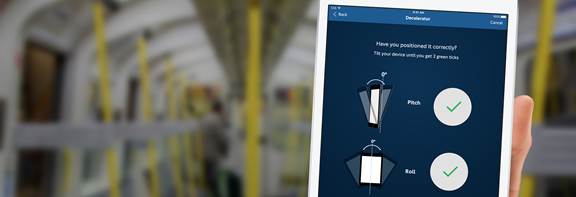Technology doesn’t kill companies, but bad predictions do
The funny thing is, despite what expensive consultants might say, very few companies will die because they failed to grasp the size of the prize, or the scale of impact new technology will have. Nor will they die because they failed to invest enough in the new and novel.
Instead, they will die because they invest in the wrong technologies at the wrong time. Or, more precisely, they will fail to figure out how to get their organisations to continuously implement the specific new technologies that will impact their customers’ lives and bottom lines now, and in the next 12 months.
This sort of discipline is a lot harder to instil than spinning up a lab filled with buzz-worthy technologies from the future. But wild innovation without a filter is as bad as no innovation at all. And the opportunity cost of investing heavily wildly in trying to guess the future is impossible to calculate - until it’s too late. Noted, there’s also a cost to not doing anything, but the investment between different time horizons has to be carefully balanced.
Mobile technology makes trying to predict the future even more unproductive
For the majority of human history, humans have enjoyed a pretty linear relationship between past, present and future. As Charlie Munger notes, it’s been reasonable for people to expect that when X happens, Y will happen - because that’s been the relationship between X and Y for as long as anyone can remember.
Today, however, we are experiencing a series of mobile technology-driven, non-linear changes that make it impossible to predict the future more than approximately 12 months out.
Smartphones have put millions of times more computing power than the computer that took humans to the moon into the hands of billions of people. This has established a network of connected supercomputers that is growing in scale, complexity and intelligence at an exponential rate. And this is driving non-linear change in pretty much every corner of life.
Examples of non-linear change are so embedded into life today that it’s easy to forget how hard it was to predict them.
New York taxi licenses were worth $1m less than five years ago. And then Uber used smartphones to connect Riders and Drivers and a dead-cert business and asset plummeted in value by 75%.
The hotel industry, for example, with all its bricks and mortar, was once deemed impossible to disrupt - even by Clayton Christensen, himself. And then along came Airbnb.
Facebook was a face book for college kids. And then it changed the new world order, mobilised the alt-right and helped make a reality TV star Commander-in-Chief.
(Sure these last two started as websites, but it’s mobile that has made their experiences and services accessible to billions of people.)
And whilst the outcomes people are trying to achieve remain remarkably consistent, it’s getting harder to predict how best to meet them.
Businesses take comfort from fake news about fake futures
Ironically, as it gets harder to predict the future, demand only increases for more predictable, coherent narratives that explain what’s going to happen.
Why? Well, we prefer order and predictability. Humans have always been suckers for mythical narratives that make sense of what can’t be easily understood. The greater the sense of unpredictability, the more we crave that coherent order - however fake those narratives may be.
And whilst investing in what everyone agrees will one day be 'the next big thing' provides (false) comfort and has an allure, it’s more valuable to go against the grain, and learn how to land what’s on the horizon already to deliver value to your customers today.
Give us single sign-on before you give us flying cars
To be clear, it’s not that companies shouldn’t be experimenting with the future, or investing in innovative solutions. Clearly, they should. But get beneath the headlines of global giants investing billions in R&D, and what really matters is that for the vast majority of companies, the balance of investment and the time horizon is all too often wrong.
Whilst Amazon might be experimenting with drone deliveries, the majority of the business is focused on nailing the now. Nobody needs flying cars if they can’t get a single view of their basket across platforms. Google learned this, too. Nobody needed wearable glasses. What they wanted was search to work on mobile. And many companies have learned that nobody requires a backend platform to rule them all...that takes two years to deliver. What they need is a service that can continuously improve today.
Unfortunately, most companies won’t give their customers what they want today - and will die as a result. Gartner tells us that eight in ten dollars spent on IT is dead money. The annual worldwide cost of IT failures is put at $3 trillion. And let’s be honest: everybody knows a multi-million pound IT project or two that was killed. Or an AI vanity project that isn’t going to end up doing anything useful except provide a case study for the company annual report.
How companies can create a culture of knowing the knowable, and nailing the now
When everyone around you is drawn to the shiny and new, and this includes your customers, it takes a strong culture and series of robust processes to go against the grain and keep your core team focused on nailing the now.
It also requires companies to elevate engineers from playing delivery roles to playing an upstream strategic role - particularly when it comes to the process of discovering solutions to customer problems.
Only with engineers central to the process is it possible to figure out how to apply the latest technologies to address customer outcomes today. And consultants, without engineers by their side, are rubbish at nailing the now - especially when their projects operate on multi-year timelines.



